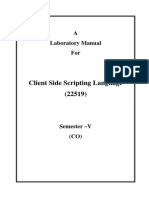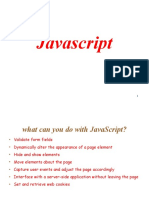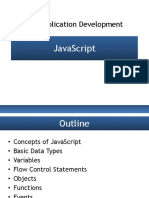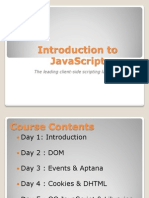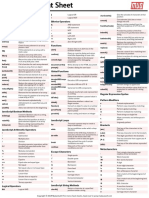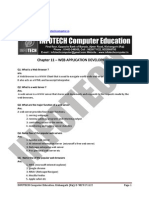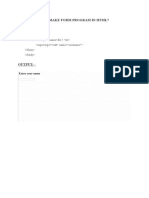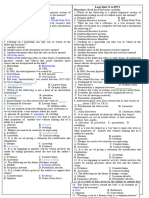0% found this document useful (0 votes)
14 views4 pagesWeb Design Practical Theory
The document provides a comprehensive guide on integrating JavaScript into HTML, covering the use of the <script> tag, conditional statements, looping statements, string methods, form events, mouse events, the Date object, and dialog boxes. It includes practical examples and syntax for various JavaScript functionalities. The content is structured into practical sections to demonstrate each concept clearly.
Uploaded by
laita nikamCopyright
© © All Rights Reserved
We take content rights seriously. If you suspect this is your content, claim it here.
Available Formats
Download as PDF, TXT or read online on Scribd
0% found this document useful (0 votes)
14 views4 pagesWeb Design Practical Theory
The document provides a comprehensive guide on integrating JavaScript into HTML, covering the use of the <script> tag, conditional statements, looping statements, string methods, form events, mouse events, the Date object, and dialog boxes. It includes practical examples and syntax for various JavaScript functionalities. The content is structured into practical sections to demonstrate each concept clearly.
Uploaded by
laita nikamCopyright
© © All Rights Reserved
We take content rights seriously. If you suspect this is your content, claim it here.
Available Formats
Download as PDF, TXT or read online on Scribd
/ 4
